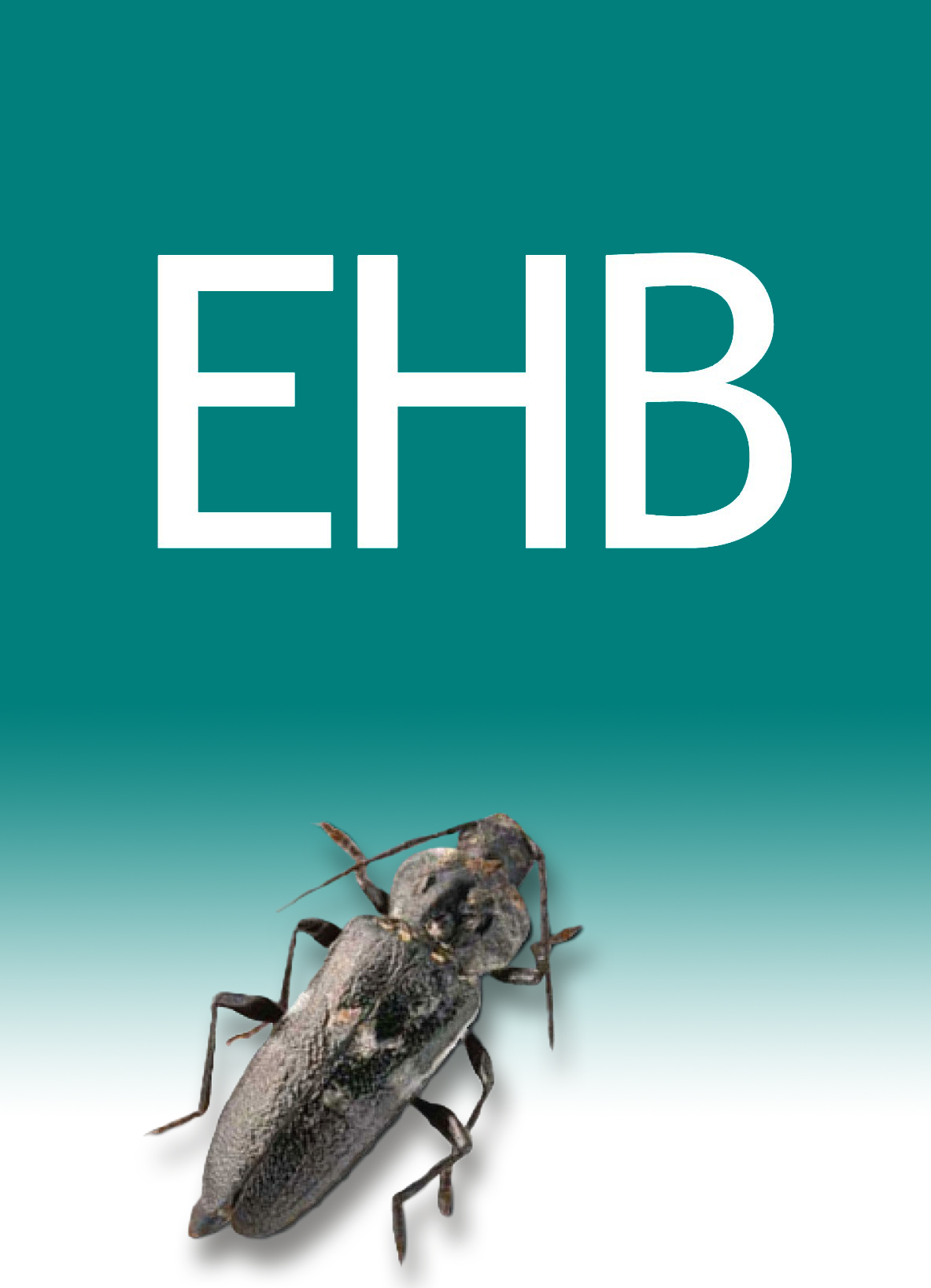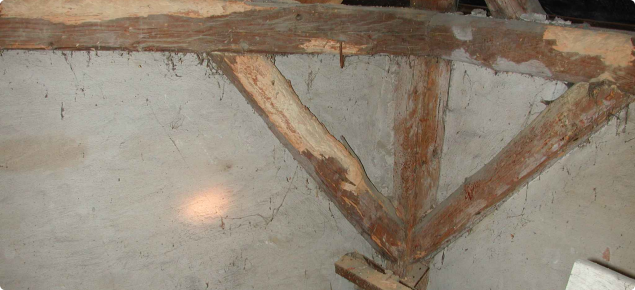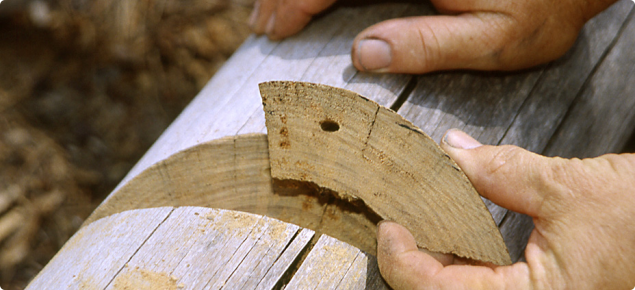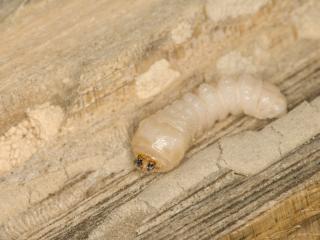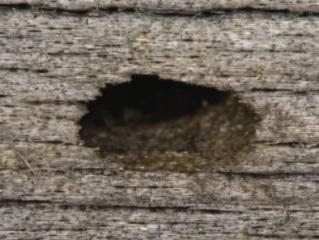Description
Eggs: The adult borer lays eggs into cracks and joints (batches of up to 120 eggs) on susceptable seasoned (dry) coniferous softwoods such as pine, fir and spruce.
Larvae: EHB larvae hatch from eggs and can live for 2-12 years (2-5 years in Western Australia). The larvae lives in tunnels or galleries in the wood. They are a creamy white colour with a rippled, elongated and cylindrical body, and enlarged flattened head. Larvae can grow up to 4cm in length.
Adult borer: Adult beetles are brownish-black to black and have a slightly flattened appearance.
The beetle’s wings are usually all black and may have distinctive white patches. On the top surface of the first body segment, behind the head, are two raised, black, shiny knobs like eyes.
Adults are 8-25mm in length with antennae about half as long as the body.
Signs of infestation
The most obvious signs of infestations are:
Exit holes: Adult beetles emerge through oval-shaped exit holes, 5-10mm in length and run in line with the grain. Frass, a mixture of fine powdery particles of wood dust and pellets of excrement, can sometimes be found below the timber where beetles have emerged.
Structural damage: Galleries within the wood are formed by the boring larvae, which can affect the structural integrity of wood. Galleries rarely break through the timber surface and are therefore seldom detected.
Frass: Boring larvae leave the tunnels packed with a mixture of wood dust and droppings, known as frass. The frass can sometimes be found close to where beetles have emerged.
Blisters: Where boring larvae has eaten through tunnels and packed them with frass, long blister-like swellings under the surface may be evident.
Sound: Soft scraping sounds may be heard as the borer eats through the timber.
Galleries: Galleries are tunnels created by the boring larvae, and are frequently packed with frass. These galleries may be evident in timber that has been planed, sawn, or split.
Tracks: EHB beetles may make tracks in the frass seen beside exit holes.
Spider webs: EHB beetles may sometimes be trapped in nearby spider webs following exit.
Damage
EHB can cause major structural damage to seasoned (dry) coniferous softwood timber, including pine, fir and spruce.
The adult beetle lays its eggs into cracks, holes and joints in dead pine trees, dead branches, or other dead parts of living trees and untreated pine timber.
The damage is done by EHB larvae that hatch from the eggs. EHB can live in its larval state for 2-12 years (2-5 years in WA) until it matures and emerges from the timber as an adult beetle, to begin the life cycle again.
By re-infesting the same piece of wood, larvae will keep feeding until the point of structural collapse. Infestation to structural collapse may take 15-25 years. The scale of damage can be seen from infestations in Europe and the eastern States. In WA, this level of damage has not been possible due to untreated pinewood being used only since 2000.
EHB has been found only in one home in WA, and the level of damage was minimal due to the short period of infestation. This home has since been fumigated to prevent further infestation.
Wood infested with EHB larvae is hard to identify, as larvae can tunnel without ever breaking the surface of the wood. It is only when the adult beetle emerges from exit holes that infestation is usually evident.
The damage done is usually not evident until the timber has been split or planed. Although, damage can sometimes be seen when larvae tunnel near the surface of the wood. Additionally, blistering may occur when frass (excrement and wood dust) has been packed into the tunnels.
EHB has been found mainly in living trees with dried out branch stubs and damaged branches and trunks, dead trees and logs. In structural timbers, EHB most often infests roofs, but is also known to infest architraves, door frames and timber articles such as pine furniture.
If allowed to go unrestricted, the consequences of EHB infestation can be devastating. The previous EHB Response Program occuring 2004-11 achieved significant progress in decreasing EHB populations. A number of management strategies is available.

